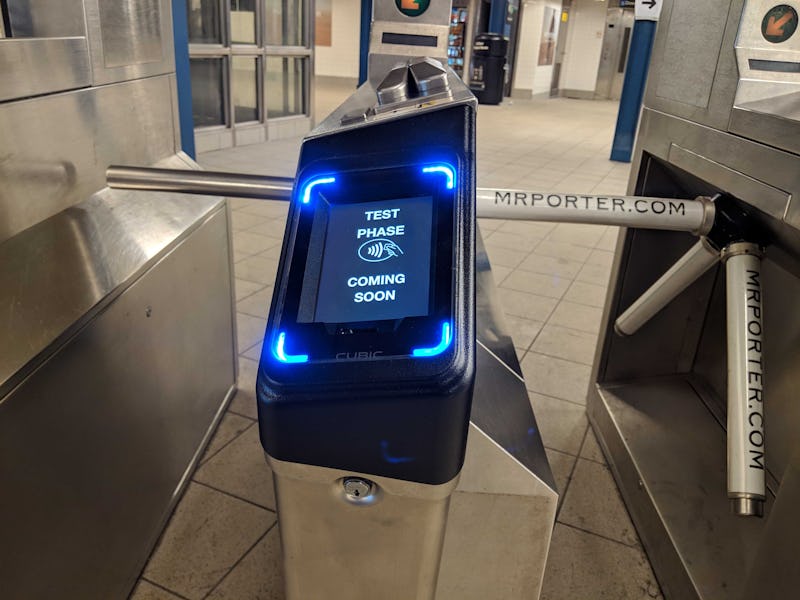Apple Pay Could Go to the Next Level if It's a Hit Among NYC Subway Riders
The payment app is Apple's sleeping giant.

Apple Pay has proven to be the company’s sleeping giant, but if it can succeed among subway riders in New York City, it could achieve heights that would make it, and the iPhone, a near-necessity. CEO Tim Cook told investment analysts on Tuesday during the company’s quarterly earnings call that it took in $11.5 billion in revenue from services like Apple Pay, but that number might go way up if it becomes a popular replace for New York’s yellow MTA cards.
The success of Apple Pay could go to the next level if commuters end up using it instead of their metro cards. Public transit authorities around the world have been adopting contactless payment options that enable riders to hover their smartphone above a turnstile instead of swiping a card.
And Apple has wasted no time getting involved: Apple Pay is accepted in six countries outside the United States, and in Chicago and Portland. (Here’s a full list of municipalities were public transit systems accept Apple Pay.) If it success in New York, though, it may be adopted in other American cities, and Apple Pay’s expected 10 billion transactions this year could grow exponentially
The turnstile at a BART -- Bay Area Rapid Transit -- station in San Francisco. BART still uses cards. But with Apple in its backyard, it may begin allowing Apple Pay.
Beginning on May 31, New York City’s Metropolitan Transportation Authority will accept Apple Pay, so subway riders in America’s biggest city — whether they be tourists visiting or or locals commuting — can pay for transit with their iPhone or Apple Watch. And that’s only the beginning of the company’s U.S. public transit plans.
It’s not just Apple Pay that will be usable on May 31, though. The new system, called OMNY, will accept all contactless cards that have the contactless symbol on them. If you have a digital wallet — not just Apple Pay — on your smart phone, you’ll be able to use that as well.
If your bank card has this symbol, it has an NFC chip, and you'll be able to use it instead of an MTA card in New York City. If you have Apple Pay, you'll be able to use your iPhone.
"New York’s MTA system will begin the roll-out in early summer."
“More and more transit systems are accepting Apple Pay and New York’s MTA system will begin the roll-out in early summer,” said Cook. “As we’ve seen in places like London, Tokyo, and Shanghai, contactless entry into transit systems helps to spur broader Apple Pay adoption and we believe this will get even more people using Apple Pay in the United States.”
Once the New York’s contactless subway payment options debuts, Apple Pay will be partner with the transit agency with more than 2.6 billion annual riders in 2018, according to the American Public Transportation Association. But there are a multitude of other transit system that Apple could tap into to boost how many people are using Apple Pay.
The Washington Metro, Massachusetts Subway, and Bay Area Rapid Transit move more than 500,000 people annually, and don’t take Apple Pay. If it works in New York, that could change minds in other cities. BART in San Francisco was the first transit system in the country to trial contactless in 2008, but with Apple in its backyard, success in New York may spur the transit system.
A map of the United States' most widely used transit systems that Apple could potentially tap into to grow its Apple Pay user base.
As of 2018, Apple has boxed out nearly half of the U.S. mobile market share, according to a February report by industry research firm Counterpoint, and around the world its is a close second to Samsung.
Incentivizing the use of Apple Pay so city resients can stop worrying about having enough money on their metro card would make the lives of consumers easier, while netting Apple passive revenue. Also, a general payment system might reduce confusion, as anybody whose tried to buy public transportation tickets in a new city can attest.
Apple makes roughly 15 cents for every $100 spent using Apple Pay, but this quickly stacks up when millions of people are using the app every day to get from Point A to Point B.